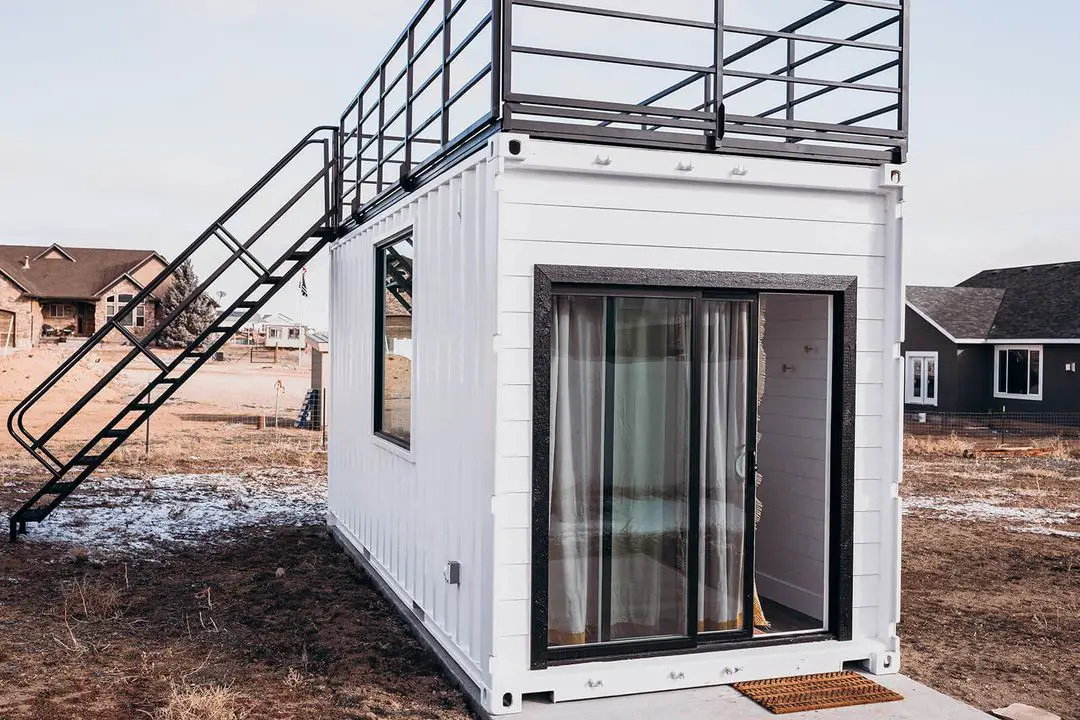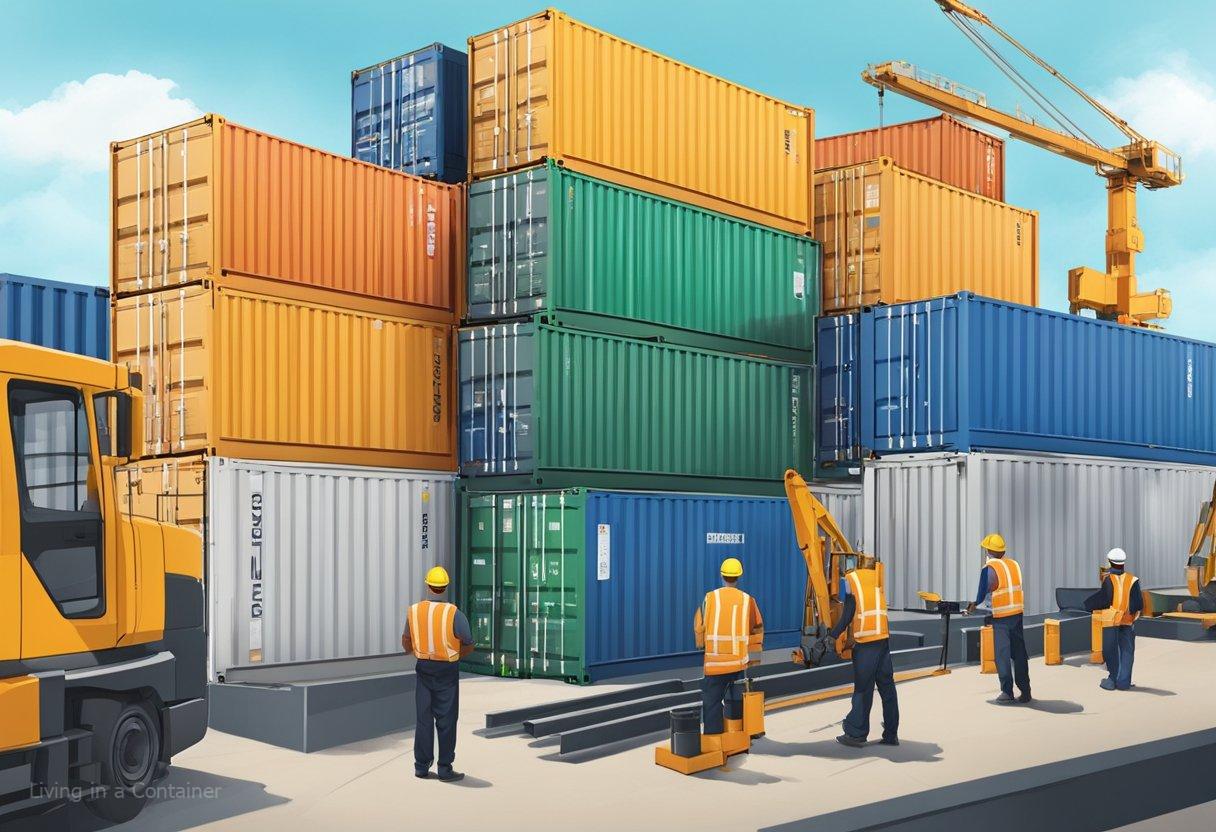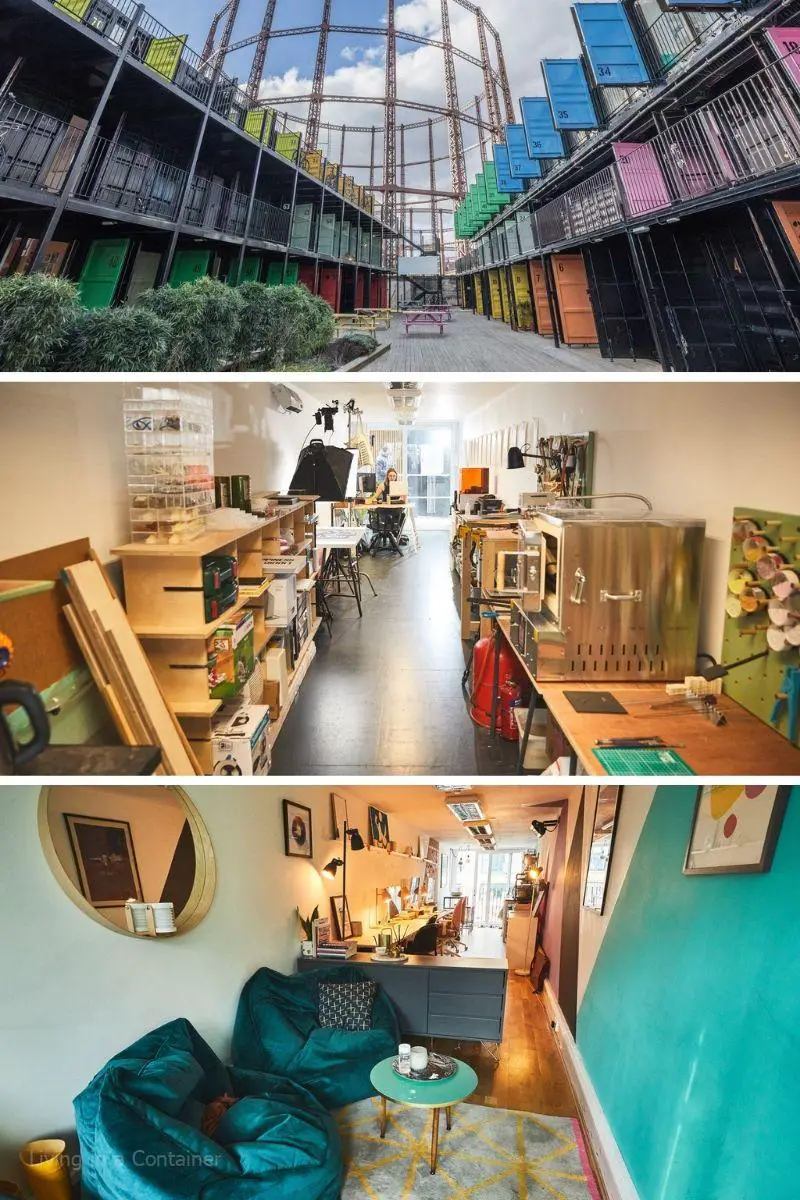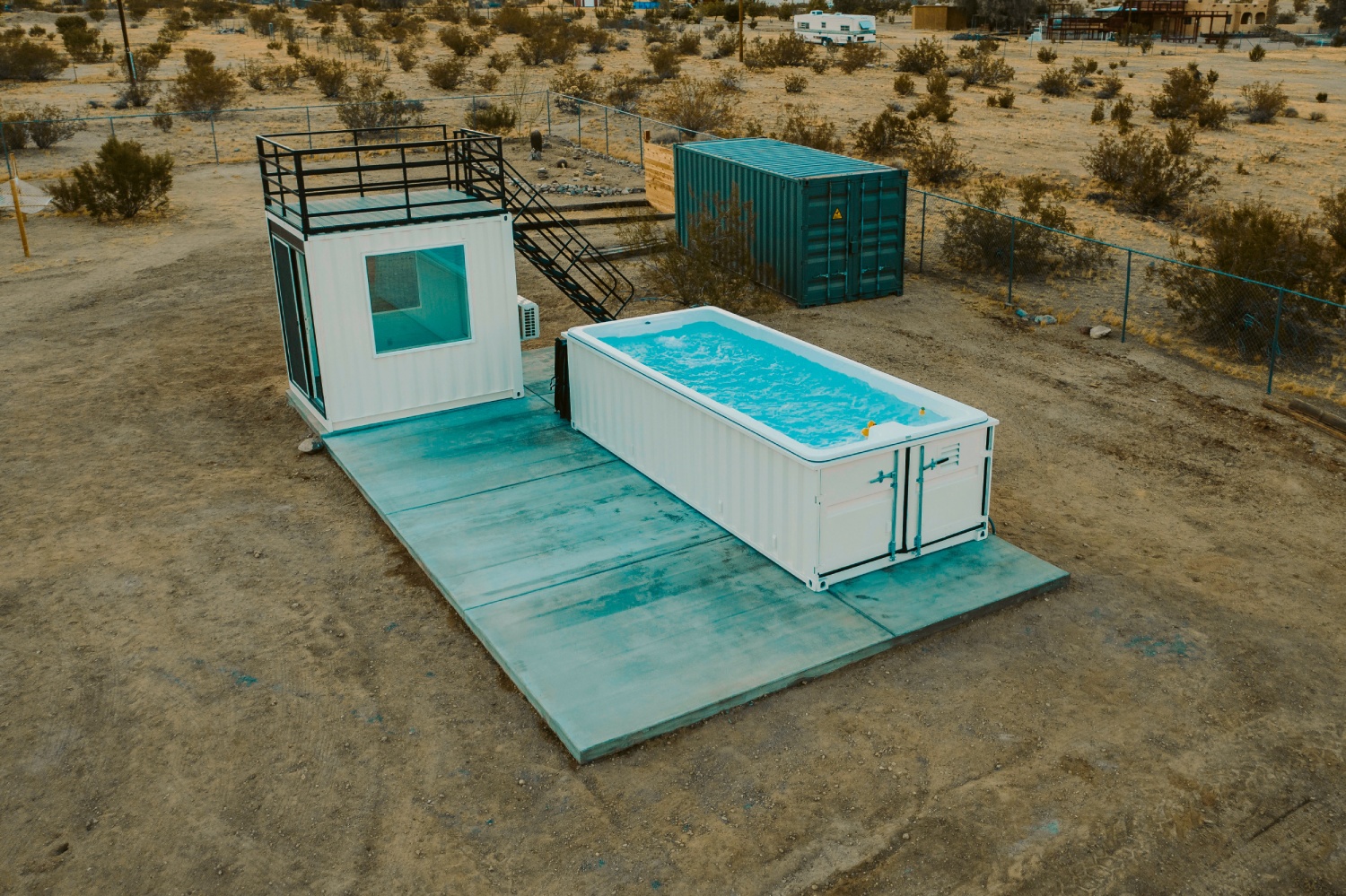In recent years, the concept of repurposing shipping containers into office spaces has gained popularity as a sustainable and innovative solution for businesses needing flexible, mobile, and cost-effective workspaces. These robust steel containers, once used for transporting goods across oceans, are being transformed into climate-controlled offices complete with modern finishes and essential services like power and plumbing. The adaptability of shipping container offices allows for a range of customizations, catering to varying business needs from compact 10-foot offices to larger, multi-container complexes.

ALT 20’ Container Office – Starting at $35,000
The appeal of shipping container offices lies in their inherent durability and security, coupled with their ease of transport. This makes them especially useful in industries that require onsite offices that can quickly adapt to changing project locations and conditions. Moreover, with the rise of environmental consciousness, repurposing shipping containers offers a form of upcycling that aligns with sustainable development goals. Companies looking for an office solution can thus benefit not only from the practicality and agility of container offices but also from contributing positively to the environment.
Key Takeaways
- Shipping container offices provide a sustainable, mobile solution for modern workspace needs.
- They are customisable and can include amenities such as climate control, power, and plumbing.
- The concept aligns with environmental sustainability through the upcycling of used shipping containers.
Overview of Shipping Container Offices
Shipping container offices are innovative workspaces crafted from steel cargo containers which were originally designed for transporting goods globally. These containers provide a sturdy and weather-resistant structure that can be easily modified and transported.
Mobility and Flexibility:
- Portability: They can be relocated with relative ease, offering flexibility for businesses such as construction or field projects.
- Swift Setup: As opposed to traditional construction, setting up a container office is quicker.
Types and Customization:
- Standard Office: A basic model, fitted with essentials such as windows, doors, and insulation.
- Custom Designs: These offices can be personalized with unique layouts, corporate branding, and advanced features to suit distinct needs.
Cost-Effectiveness and Sustainability:
- Affordability: Shipping container offices are often more cost-efficient than traditional construction.
- Eco-Friendly: Reusing containers reduces environmental impact and supports sustainability.
They serve as a functional and creative solution, especially in industries that benefit from modular and temporary office spaces. The containers can stand alone as individual offices or be combined to form larger complexes. Interior adaptability allows for a range of designs, from simple open-plan spaces to multi-room configurations with modern amenities. They epitomize adaptability in modern workspace design and are emblematic of a shift towards non-traditional office solutions that prioritize both functionality and innovation.
Benefits of Shipping Container Offices
Shipping container offices have grown in popularity due to their impressive blend of durability, cost-effectiveness, and environmental benefits. These structures offer a modern alternative to traditional buildings and cater to businesses looking for innovative workspace solutions.
Durability and Security
Shipping container offices are designed to withstand harsh conditions, making them extremely durable. The steel construction ensures a high level of security, protecting against break-ins and harsh weather, which is a primary concern for onsite offices in remote locations.
Affordability and Cost-Effectiveness
The affordability of container offices makes them a compelling choice for businesses. Their cost-effective nature is evident both in the upfront savings on construction costs and the long-term reduction in maintenance expenses compared to traditional office buildings.
Sustainability and Repurposing
Shipping container offices exemplify sustainability. By repurposing shipping containers, businesses minimize their ecological footprint. These offices are a clear nod towards sustainability, as they reuse materials that might otherwise contribute to waste.
Mobility and Flexibility
For businesses that need to move frequently, the mobility of container offices is particularly beneficial. These offices can be easily transported to different sites while maintaining a consistent work environment. The flexibility offered is unparalleled, allowing companies to expand, downsize, or relocate with minimal disruption.
Design Considerations for Container Offices
When planning a shipping container office, certain design considerations must be factored into the decision-making process to ensure functionality, comfort, and efficiency. These include customization options to better align with user needs and interior layout planning for optimal use of space.
Customization Options
Customizable aspects of container offices allow for a tailored workspace that can suit various business requirements. Companies often seek to enhance their units with insulation and climate-controlled environments to make the container offices suitable for the different climates they might be stationed in. For instance, insulation is crucial for maintaining temperature consistency and can be customized based on geographic location and intended use. Businesses can also opt for exterior modifications such as custom paint or branding, and interior upgrades such as specialized lighting and built-in furniture to create a more functional work area.
- Insulation types, such as spray foam or panels
- Climate control: HVAC systems versus basic ventilation
- Exterior customization: Paint, decals, or wrap
- Interior upgrades: Lighting, furniture, and fixtures
The importance of these customizations cannot be underestimated, as they greatly enhance the utility and comfort of the office area.
Interior Layout and Floor Plans
A well-thought-out floor plan is crucial in maximizing the available space within a container and ensuring that it serves its intended purpose effectively. Modular office spaces within a container can be conceptualized to include distinct areas for workstations, meetings, and storage. The inherent structure of shipping containers can serve as a blank canvas for diverse floor plans that allocate space for a work area, office area, and storage area. Partition walls can be installed to create separate rooms or open-plan layouts can be chosen to foster collaboration and communication.
- Layout example 1:
- Work area: Desks, chairs, and computers
- Office area: Private offices or cubicles
- Storage area: Shelving units, cabinets
- Layout example 2 (Open-plan):
- Collaborative space: Large desk clumps, communal tables
- Quiet zones: Sound-proofed corner for focused work
- Multi-functional spaces: Areas convertible between lounge and meeting room
Designing the interior layout requires a keen understanding of how the space will be used and who will use it. This ensures that every square foot is utilized to its fullest potential, creating a bespoke and efficient container office.
Types of Shipping Container Offices
In the evolving landscape of workspaces, shipping container offices offer a range of configurations to meet diversified business needs, such as ground-level office space for ease of access and portability for location-flexible solutions.
Ground-Level Office Space
Ground-level shipping container offices provide direct access to the workspace without the need for stairs or elevators, which simplifies logistics and enhances accessibility. These types of offices often feature modifications such as insulation, heating, and electricity, making them suitable for a variety of climate conditions and business operations. Configurations can vary from basic single-container setups to more complex, multi-container designs that might include private offices, reception areas, and conference rooms.
Mobile Offices and Portable Solutions
Mobile office setups fashioned from shipping containers are ideal for businesses that require on-site presence, such as construction firms or event management companies. These portable offices are designed to be easily transported from one location to another, offering a flexible and secure workspace solution. They can be outfitted with essential amenities like HVAC systems for comfort and come in various sizes, including 10ft, 20ft, and 40ft options to match different spatial needs and team sizes.
Practical Applications
The following subsections detail specific ways shipping container offices are benefiting various sectors through their versatility and efficiency.
Construction Site Offices
On construction sites, shipping containers have become a cornerstone for arranging on-site offices. They provide a secure environment that shields essential documents and personnel from the elements. Their portability allows for easy relocation as the project advances or concludes.
Temporary Spaces for Small Businesses
For small businesses, shipping containers offer a fast and cost-effective solution for temporary office space during renovations or expansions. These converted containers can support daily operations without interrupting business continuity, serving as an adaptable space with minimal setup time.
Specialized Facilities like Break Rooms or Guard Shacks
Adaptability is key with shipping containers, allowing them to be transformed into specialized facilities. They can seamlessly function as comfortable break rooms for employees to unwind, or as well-equipped guard shacks for enhancing on-site security measures. Their robust structure provides durability for consistent use in various settings.
Acquisition and Setup

In the market for shipping container offices, buyers and lessees have distinct pathways to acquire their office space. Price points and flexibility in design vary, and understanding the nuances of delivery and local regulations ensures a streamlined setup process.
Purchasing vs. Leasing Options
When it comes to acquiring a shipping container office, one has the option to purchase or lease. Purchasing provides the benefit of ownership and is a one-time investment, with the cost for a prefabricated container office being roughly $17,000. This option is more suitable for those seeking long-term solutions and the ability to make significant modifications. Leasing, on the other hand, offers a more flexible and potentially cost-effective solution for those with temporary needs or limited capital.
Delivery and Installation
Once a shipping container office is secured, the next steps are delivery and installation. The cost of delivery can vary significantly depending on the distance and accessibility of the site. It’s imperative to work with a reliable builder or supplier who can navigate the delivery logistics, ensuring the container arrives in good condition and is installed properly. The chosen site must be prepared beforehand to have a level foundation and connections for utilities if needed.
Required Permits and Regulations
Understanding local regulations and acquiring the necessary permits is crucial for the setup of a shipping container office. Regulations may dictate the placement, foundation, electrical wiring, and more. Securing permits ensures adherence to safety standards and builds trust with municipal authorities. The costs and timeframes associated with permits can vary based on location and the scope of the modifications to the container. Thorough research and compliance are key to avoiding delays or legal issues.
Customizations and Upgrades
When one opts for a shipping container office, the level of customization and upgrades available is virtually limitless, from robust exterior modifications to tailored interior design and amenities. These enhancements are geared to elevate both functionality and aesthetic appeal.
Exterior Modifications
A shipping container can be modified externally to not just enhance its appearance, but also to improve its structural integrity and weather resistance. A variety of customizable options include:
- Doors and Windows: Additions can range from standard doors to glass panes, providing natural lighting and access points.
- Paints and Coatings: Specialized coatings are applied for protection against corrosion and to give a fresh, customized look.
- Roofing: Options like green roofing can be added for extra insulation and an eco-friendly touch.
Interior Design and Amenities
The interior of a shipping container office can be transformed to resemble a traditional office layout, complete with all necessary amenities. These interior upgrades include:
- Walls: Partition walls can be installed for private office spaces or meeting rooms. These can be insulated and finished with a variety of materials.
- Flooring: Choices range from durable vinyl to sleek wood finishes, suitable for different aesthetic preferences and usage needs.
- Lighting: LED panels or track lighting can be incorporated for energy efficiency and improved ambiance.
- Furniture: Built-in or modular furniture can optimize the space efficiency of the container office.
- HVAC Systems: For comfort in any climate, heating and cooling systems are essential and can be integrated seamlessly.
Through these customizations, a shipping container can be transformed into a highly functional, personalized office space.
Case Studies and Real-World Examples
Shipping container offices have emerged as innovative solutions for businesses seeking flexibility and sustainability. This section showcases practical applications of shipping containers in the real world, providing insights into how companies leverage these modular spaces for operations and frequent relocations.
Containerville

Containerville in London is a community composed of refurbished shipping containers that serve as cost-effective and creative workspaces for startups and small businesses. Reflecting the trend of upcycling, these functional offices showcase the blend of modern design and environmental consciousness.
Businesses with Frequent Relocation
For businesses that need to move frequently, shipping container offices provide an unparalleled blend of mobility and functionality. The inherent portability of containers allows companies to seamlessly transition from one location to another, minimizing downtime and facilitating continuity.
Example:
- Flexibility: A construction company utilizes shipping containers for on-site offices, enabling quick setup and relocation as projects evolve and move.
- Sustainability: Marketing agencies opt for container offices, capitalizing on the eco-friendly aspect of reusing materials, which aligns with their corporate social responsibility goals.
The versatility of shipping container offices is increasingly recognized as a cornerstone of modern business logistics, particularly for industries that prioritize adaptability and sustainability.
Conclusion

ALT 10’ Container Office – Starting at $26,000
Shipping container offices represent a significant shift in workplace design, marrying cost-effectiveness with sustainability. Companies and individuals are turning to these innovative spaces because they offer a unique blend of functionality and flexibility. Shipping containers are durable, designed to withstand harsh conditions, making them an excellent choice for robust office environments.
The customization potential of these modular units allows for bespoke office solutions, enabling businesses to align the design with their branding and operational needs. Moreover, they can be relocated with relative ease, presenting an attractive option for businesses with evolving location needs.
Adopting shipping container offices does not only contribute to environmental preservation by repurposing unused containers but also reduces construction waste and energy costs associated with traditional building methods. A shipping container office can be constructed quicker than conventional structures, which reduces on-site construction time and the consequent disruptions.
Businesses should, however, be mindful of the challenges, such as ensuring adequate insulation and ventilation to maintain a comfortable interior climate. Yet, with proper planning and execution, these challenges are readily surmountable, further establishing shipping container offices as a practical alternative to traditional office spaces.
Given their rising popularity, it’s clear that shipping container offices hold a firm place in the future of innovative and adaptive architecture. They stand not just as a trend but as a viable, long-term solution for many workspace needs.
